Spoiler alert. This blog post has nothing to do with genealogy. Instead, it is about one of my other interests, a new project we tried out this year.
Raising monarch butterflies.
Joe and I both enjoy the birds and other wildlife we see in our woods, but Joe is the real gardener around here. He loves working in the yard–landscaping, growing flowers, and nurturing a pollinator garden. He does the majority of the outdoor work around here and I help out to a lesser degree. Dead-heading spent flowers is my specialty and I’m not too bad at raking.
One of Joe’s projects the past couple years has been to start and maintain a pollinator garden, something to help the butterflies and bees. He planted several varieties of milkweed for the monarchs as well as other blooming plants for the bees and for other types of butterflies.
Last year we attended a monarch butterfly workshop in Celina and learned that some local people were helping the monarch population by putting monarch eggs and caterpillars in a specially-styled box, providing them with food and a place to attach their chrysalis, and releasing the butterfly that eventually emerges.
We decided we wanted to try this, hoping to improve the butterfly’s chances. Joe made a wood-framed, screened-in box last winter for this project.
The female monarch butterfly lays tiny white eggs on the underside of milkweed leaves. A little caterpillar hatches from the egg in about 5 days and eats the milkweed leaves. The caterpillar grows quickly. They are little eating (and pooping) machines. After about 14 days, when the caterpillar is about 2 inches long, it will attach itself to the underside of a leaf or twig and turn into a chrysalis, like a cocoon, which is the pupal stage. Eventually a butterfly will emerge from the chrysalis in about 10-14 days.
In the wild, monarch eggs have less than a 10% chance of making it to a butterfly.
We learned that you can improve the odds of this whole process and help the monarchs by putting the eggs or the caterpillars into a special box and making sure they have plenty of milkweed leaves to eat. This will sustain them through the chrysalis stage, until they become a monarch butterfly, which can then be released.
On 6 August we found a monarch caterpillar and put it on a milkweed stem and placed it into the box. Joe put the milkweed stem in a little tube of water. That first caterpillar was fairly good sized and two days later, on 8 August, it climbed to the top of the cage and attached itself to the screen in an up-side-down position. By the next day it was a chrysalis. Eleven days later, on 19 August, a beautiful female butterfly emerged. It took a couple hours for her to dry out, spread her wings, and leave the cage, but she eventually flew away and landed on a tree, in the sun.
This was fun, so in the meantime we added more caterpillars to the box. On 8 August we added 4 more good-sized caterpillars and 2 more on the 10th. Of course, we had to add more milkweed stems. They really do eat a lot!
Eventually they all climbed to the top of the box and transformed into chrysalises. At one point we had 7 chrysalises hanging from the top of the box.
Over the next week 5 more beautiful butterflies emerged.
One chrysalis did not survive and we are not sure what happened to it. Five of the monarchs were females and one was a male. Males have a black spot on each of their lower wings. We wonder if there are naturally more females to help perpetuate the species.
We thought we were finished for this year, after raising and releasing 6 butterflies. After all, the weather will be getting cooler and the last generation of monarchs will be heading down to Mexico before long, where they will spend the winter.
But on 19 August I found a teeny tiny caterpillar on the underside of a milkweed leaf and we put him in the cage. He grew quickly he turned into a chrysalis on the 29th.
Then Joe found 2 mid-sized caterpillars and put them in the box on 31 August. As of today, these last two are still munching away on the leaves and are about large enough to turn into chrysalises.
When these emerge, we will have raised and released a total of 9 monarch butterflies. What fun and what a good way to help the monarch population. We will definitely do this again next year.
We did learn that we will probably need more milkweed plants. These caterpillars really do eat a lot! One of our larger milkweed plants has a pod on it and we will harvest it for the seeds when it matures.
We took a ride around the woods a couple days ago and saw 2 monarch butterflies flying around. They are so beautiful when they fly. We wondered if they were ones that we had released.
Hopefully the monarchs we nurtured will make it all the way to Mexico.
Safe travel, little ones.

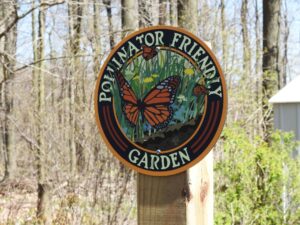
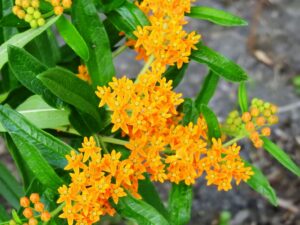
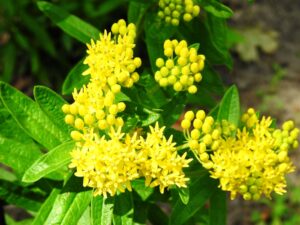
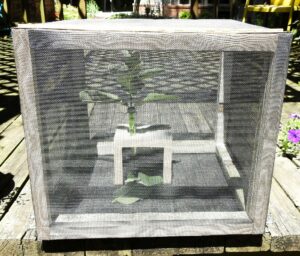
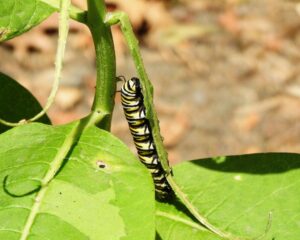
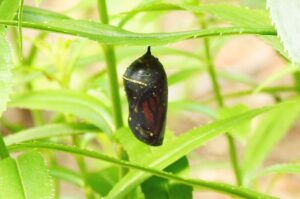

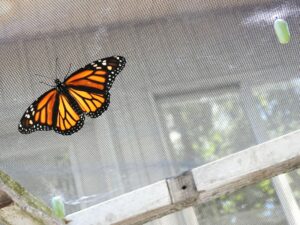
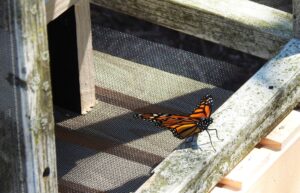
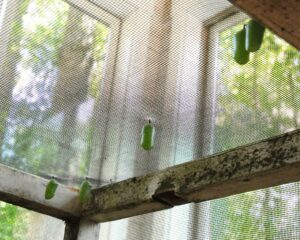
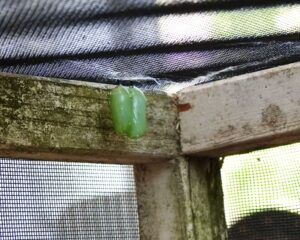
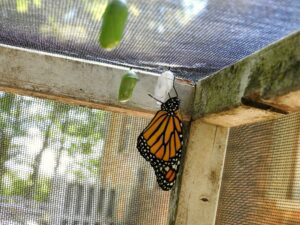
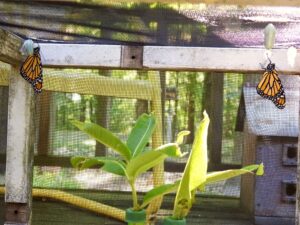
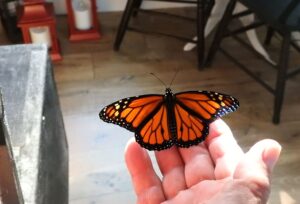

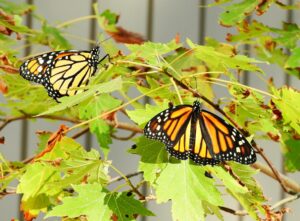

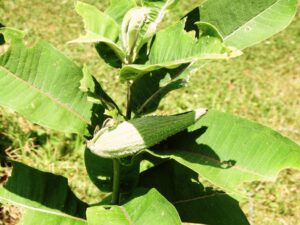


8 comments
Skip to comment form
Always great to be learning something new! Have you tried any Joe Pie weed? I think that is another plant that butterflies like. It is native around here. Grows on the taller side and a later bloomer.
Have a great weekend. Going to be gorgeous!
Deb
Author
Yes, Joe just got some Joe Pie weed and planted it in the garden. It is pretty and we can’t wait to see how they like it.
What a sweet and educational post! Thank you, Joe and Karen. Years ago, we witnessed hundreds of monarchs perched for the night on a willow tree in our back yard, presumably on their migration route to Mexico.
Author
What a sight that must have been, to see all those monarchs! We would love to see something like that. Thanks for writing!
Thanks to you both for caring for our butterflies! And letting us know of your endeavor!
Author
You are welcome and glad you enjoyed the article.
This is so interesting! Have you seen the documentary about the couple that discovered how Monarchs migrated & eventually made their way to Mexico? I saw it ion and IMAX theater & years later on PBS.
Author
Thanks, Linda! No, we have not seen that documentary but will be on the lookout for it.